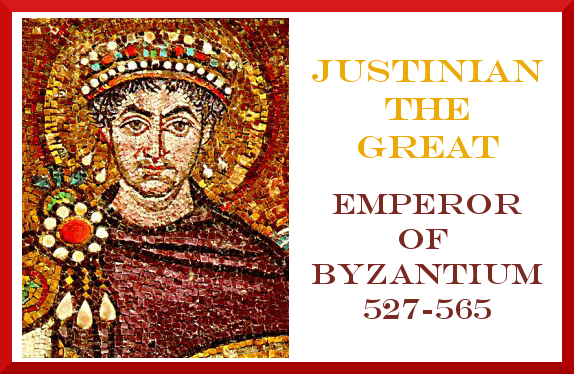Early Middle Ages: The Byzantine Empire (476-1453)
 |
| source |
Justinian has been named the last Roman and the first Byzantine emperor. His reign was significant as a turning point between the old and new regimes.
Lesson Plan:
Lesson Plan:
- Read a history spine, such as Kingfisher History Encyclopedia p. 100-101. Make notes of key words as you read. Write a few sentences about what you have learned in your history notebook. Another option is to use the Medieval History Portfolio, Homeschool Journey.
- Color and label an appropriate map such as the one from History Odyssey, Pandia Press, Level 2 (5th-8th grade).
- Mark significant dates on your timeline.
- Optional: Make a mosaic. Some ideas for projects can be found at Glittering Shards: Mosaic Hanging Decorations...Artful Discoveries, Dick Blick, Byzantine Medallions
 |
| Quentin's map, age 10 |
Older students can label the major bodies of water (Mediterranean Sea, Black Sea, and the Atlantic Ocean) and countries (Spain, Greece, and Italy) or even the major land-forms such as mountains, deserts and plateaus.
 |
| Byzantine Mosaics, 2010 |
We looked at why Justinian wanted to drive the Ostrogoths out of Italy.
We compared and contrasted the Code of Justinian from the Roman laws.
Justinian is known in history as Justinian the Great. We talked about why this was so and whether he deserves the title.
We compared and contrasted the Code of Justinian from the Roman laws.
Justinian is known in history as Justinian the Great. We talked about why this was so and whether he deserves the title.
We looked at Byzantine art.
The wealthy Byzantine Empire had a hugeinfluence on personal ornamentation. Therewere many gold mines within its borders, andthe location of its capital, Constantinople,was perfect for trade between East andWest. Characterized by extensiveiconography, Byzantine jewelry wasoften an outward symbol of faith.Badges, pendants and medallions werewidely produced to denote a person’soffice or rank.-Dick Blick
We made mosaics using mosaic tiles, tile adhesive and a old CD case.
- The Usborne Internet-Linked Encyclopedia of World History, pages 202-203.
- A Child’s History of the World by V.M. Hillyer, Chapter 42: New Places – New Heroes.
- Story of the World, Volume 2: The Middle Ages by Susan Wise Bauer, Chapter 4: The Byzantine Empire.
- The Kingfisher History Encyclopedia
- History Odyssey, Pandia Press, Level 1 (1-4th grade), Level 2 (5th-8th grade or Level 3 (9th-12th grade): Map 1, “The Byzantine Empire,”
- Medieval History Portfolio, Homeschool Journey
- Glittering Shards: Mosaic Hanging Decorations...
- Artful Discoveries
- Dick Blick, Byzantine Medallions
similar posts:

